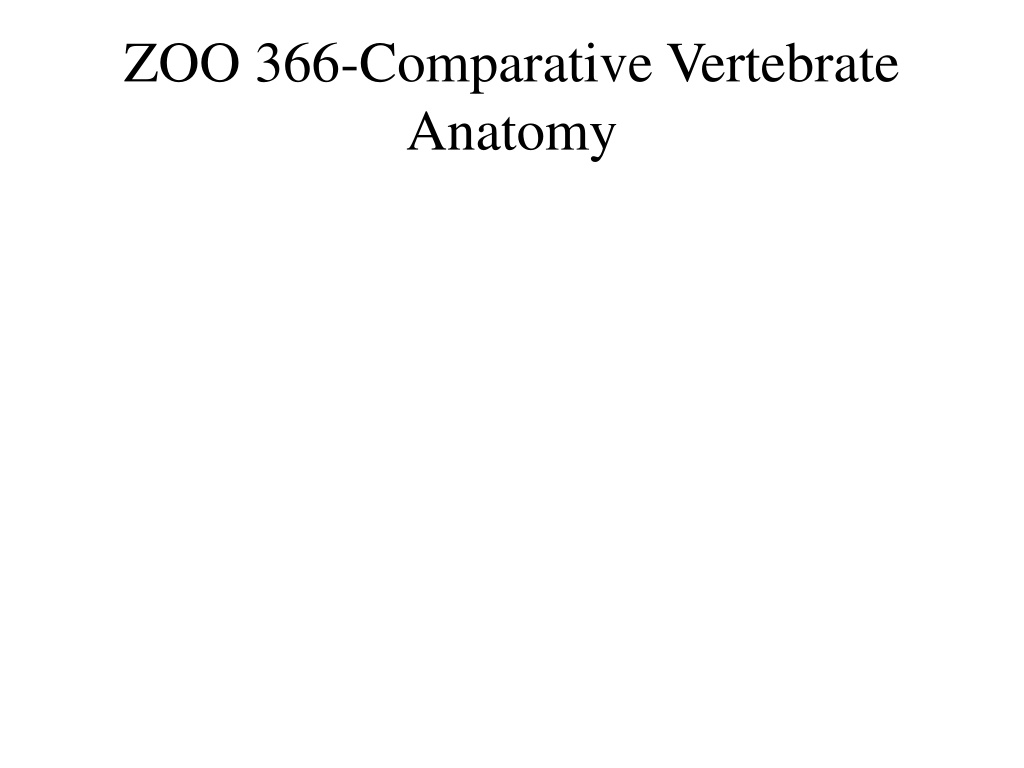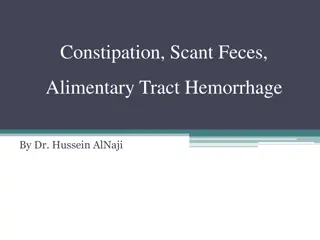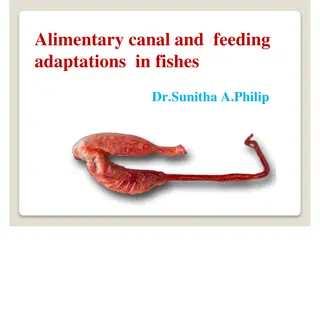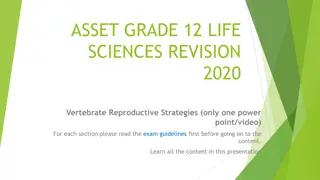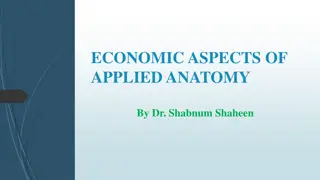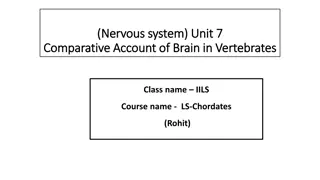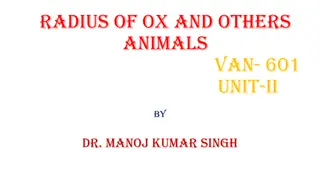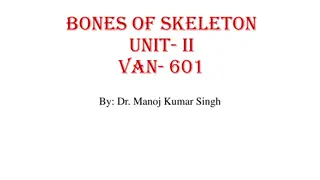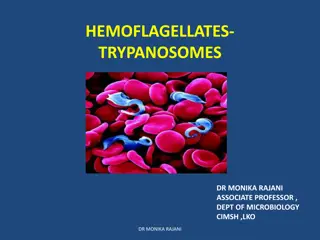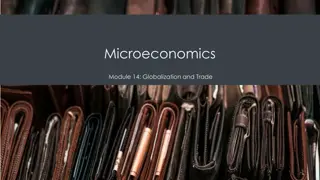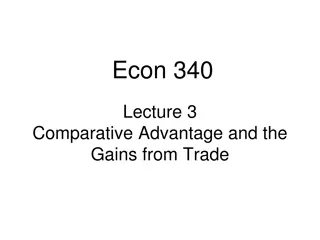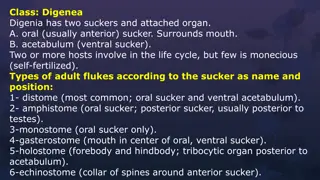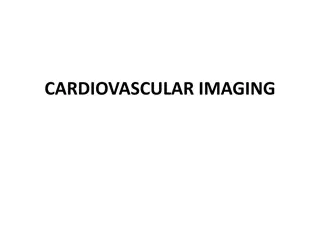Comparative Vertebrate Anatomy - Alimentary System Overview
The alimentary system in vertebrates undergoes invagination to form a stomodeum and proctodeum, with tissue of mesodermal origin forming the wall of the alimentary canal. Differentiated into regions, the canal includes the buccal cavity, pharynx, esophagus, stomach, and intestine. The system is crucial for digestion and nutrient absorption.
Uploaded on Oct 06, 2024 | 1 Views
Download Presentation

Please find below an Image/Link to download the presentation.
The content on the website is provided AS IS for your information and personal use only. It may not be sold, licensed, or shared on other websites without obtaining consent from the author.If you encounter any issues during the download, it is possible that the publisher has removed the file from their server.
You are allowed to download the files provided on this website for personal or commercial use, subject to the condition that they are used lawfully. All files are the property of their respective owners.
The content on the website is provided AS IS for your information and personal use only. It may not be sold, licensed, or shared on other websites without obtaining consent from the author.
E N D
Presentation Transcript
ZOO 366-Comparative Vertebrate Anatomy
University of Agriculture, Abeokuta, Nigeria.
invaginated to form a stomodeum and proctodeum respectively. The wall of the alimentary canal is completed by tissue of mesodermal (splanchnic) origin and consisits mainly of muscle and connective tissue together with the blood vessels and nerves. Outwardly the tube is invested by the peritoneum ( coelomic epithelium), which also covers the mesenteries by which it is suspended in the body.
in the embryo as a simple straight tube, but in the adult it is differentiated into regions which differ according to the particular work carried out therein. The tube is usually much longer than the body, so that since the two ends fixed, it is thrown into coils.
The main regions of the alimentary canal are the buccal cavity, pharynx, esophagus, stomach and intestine.
variable shaped, movable, muscular tongue is found on the floor of the buccal cavity. In many instances, even in the lower vertebrates, there is no clear line of demarcation between the buccal cavity and the next region, the pharynx, but developmentally the former is lined with ectoderm and the latter by endoderm. The two regions can be called the bucco-pharyngeal region.
found in air-breathing vertebrates, originate. The lungs may arise directly from a layngcal chamber or when a neck is present, as in the mammals, they are situated at the end of a tubular trachea. In those vertebrates where the majority of the visceral clefts have been lost, the pharyngeal part of the first cleft is retained as part of the auditory apparatus to form Eustachian tube and tympanic chamber.
the flattening of the tube or the folding of its lining, the lumen is considerably reduced. The oesophagus forms a connecting channel between the pharynx and the next region, the stomach.
escape of the food from the stomack into the intestine is guarded against by the development in the wall of the distal (pyloric) end of the stomach of a ring of muscle termed a sphincter, the pyloric sphincter, which closes the aperture and only opens under certain conditions. The position of this sphincter is usually marked externally by a constriction, the pyloric constriction. In the wall of the stomach numerous simple glands, the peptic or
intestine is the region where a great part of digestion and most of the aborption of the digested food takes place. And is appropriately modified in different vertebrates. The lining epithelium provides numerous glands, the products of which are poured out on to the food. The form of this region varies considerably in different vertebrates as also does its terminology, any details must be left to the description of individual examples.
muscular contraction of a rhymical character which pass along the length of the tube, pushing the food in front of the constricted region. This rhythmical contraction is termed peristalsis.
these regions. The liver and pancreas, already mentioned as opening by their ducts into the duodenum, arise in some animals 9e.g chick0 as outgrowths of the endoderm of the alimentary canal, but soon mesodermal derivatives become incorporated with these outgrowths to form the adult glands, the connection between the gland and the intestine being retained as the duct. The secretions of these glands, bile and pancreatic juice, play
In addition to these special glands, the lining epithelium of all regions of the alimentary canal contains numerous mucous glands.
capillaries. The adrenal gland lies on its ventral surface. The kindney is bathed in the lymph which is contained in the cisteria magna and its drained into the veins of the kidney. These are the renal veins and the renal portal vein. Renal arteries supply the kidney.
Bowmans capsule into which pushes an affercent arteriole that branches off then leaves away the corpuscle as an efferent arteriole. The tuft of vessels thus formed insiude the corpuscle is called the glomerulus. (The efferent arteriole breaks up, outside the glomerulus, into capillaries which connect with those of the renal portal vein).
convoluted and ultimately opens into a collecting tubule. The collecting tubules pour the urine into the Wolffian duct which extends along the outer lateral border of the kidney.
Search for the above mentioned structure in the section. These are:
thelateral edge of the organ, lined by a simple cubical epithelium and surrounded by connective tissue and unstriated muscle fibres.
the Wolffian duct. It may contain blood corpuscles and its wall consists of the usual layers characteristic of veins.
The renal artery an renal are conspicuous on the ventral side of the kidney -
The adrenal gland lies on the ventral surface, and consists of glandular cells which are surrounded by numerous blood vessels. -
the nephrostomes or peritoneal funnels are found on the ventral side of the section. Each peritoneal funnel is lined largely with ciliated cuboidal cells.
corpuscles are found each of the glomerulus in the middle, and of the Bowman s capsule to the outside. The wall of the latter is built up of a simple squanmous epithelium.
tubules are lined by large granular cells and each have a narrow lumen. They are the greatest elements of the kidney in number.
the section lined by cuboidal cells which contain but few granules and have a wide lumen. They are mush fewer in number that the uriniferous tubules.
A network of blood vessels and capillaries is held by connective tissue among the tubules. -
